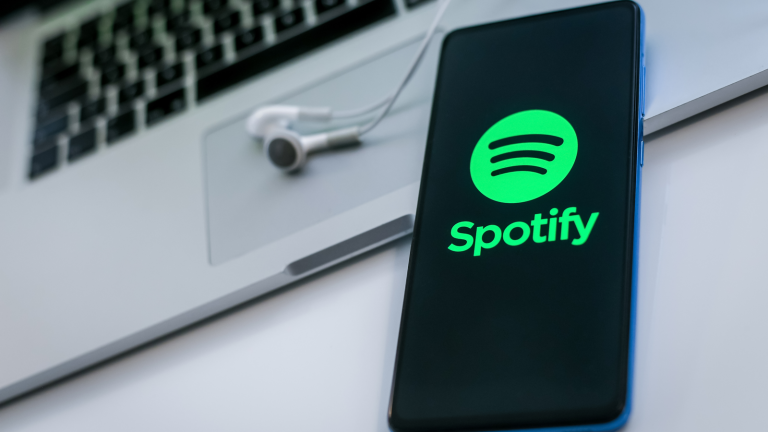- Google’s on board with Spotify’s direct billing option.
- Spotify’s been pushing for a direct billing option for years.
- While it’s not a gamechanger, it ought to deliver more revenue and push SPOT stock higher.
Spotify (NYSE:SPOT) just announced a multi-year agreement with Google that probably won’t do much for SPOT stock in this year but should help it generate more revenue in the long term.
Under the new arrangement, when you download Spotify from Alphabet’s (NASDAQ:GOOG, GOOGL) Google Play Store, you’ll have two options to pay instead of one. The payment options will sit side-by-side in the app. Users will be able to be billed directly by Spotify or by Google Play.
While that probably doesn’t seem like a big deal, the change is a long time coming and will add more dollars to the top line. How much more is yet to be determined. Spotify still needs to work with Google’s engineers to make this happen in the U.S. and elsewhere.
User choice billing for Android should go live by the end of 2022. In the meantime, investors can debate the merits of such a move for Spotify stock.
It’s not a game-changer, but it’s an important step in Spotify’s pathway to profitability. Here’s why.
| SPOT | Spotify Technology | $146.04 |
Big Chunk of Processing Fees Lost to SPOT Stock
Developers of apps such as Spotify pay Google between 15-30% of the monthly subscription fee collected from the audio streaming platform’s users. That fee is for Google processing users’ credit card payments.
Assuming you sign up for Spotify’s premium service (Individual) that is ad-free, you’ll pay $9.99. Google Play will take $1.50 to $3 to process your credit card each month. That’s not something you spend; it’s revenue that doesn’t make its way into Spotify’s coffers.
With this new agreement with Google, Android users will be able to pay directly through Spotify’s payment processing. However, the biggest fly in the ointment is that Google will still charge Spotify a fee even when it collects monthly subscriptions. In South Korea, Google charges an 11% fee when a subscription is paid for through a third-party billing system.
So, it’s hard to know how many premium subscribers will switch to direct billing from Google Play. It’s also important to note that Apple’s yet to react to the news. That would make a difference in the additional revenue that would flow to Spotify directly.
However, it is possible to make an educated guess about the potential increase in revenue.
Back-of-the-Napkin Estimate
At the end of December, Spotify had 180 million premium subscribers, up from 155 million at the end of 2020. In 2021, it generated 8.46 billion euros ($9.29 billion) in revenue from its premium subscribers. That’s $51.61 per subscriber annually, or $4.30 per month.
According to Statista, the Google Play Store had 10.86 million Spotify app downloads globally compared to 3.6 million downloads from the Apple App Store. In my back-of-the-napkin calculation, I’m assuming Android users account for 75% of the premium subscribers and revenue [10.86 million divided by 14.46 million]. That would be $7 billion in premium subscriber revenue from Android users.
To be sure, it’s a crude estimate. It doesn’t consider other users and app stores such as Amazon, etc.
The $7 billion revenue number from above is after Google’s taken its cut. Mark that up by 15% — the low end of the fee charged developers — and you get an additional $1.05 billion in annual revenue. Based on 192.2 million shares outstanding, that’s an additional $5.46 a share in revenue it’s missed out on.
Currently, SPOT stock trades at 2.66 times its 2021 revenue of 9.67 billion euros ($10.62 billion). Add $1.05 billion and the multiple drops to 2.38x sales. It’s not a huge drop, but considering it’s on the verge of making money, the future expansion of its price-to-sales multiple is a real possibility.
SPOT Stock is Down 37% YTD
Spotify is currently trading where it did in the March 2020 correction and where it traded after going public in April 2018.
In the past three years, it’s gone from operating losses of $73 million and $293 million in 2019 and 2020, respectively, to an operating profit of $94 million in 2021. Its income statement is in better shape today than when it went public, yet it trades at a P/S ratio that’s lower than it’s ever been as a public company.
The agreement with Google ought to be good for Spotify and SPOT stock in the long run. It gives the company more control over its revenue stream while providing users with a better payment experience.
In mid-March, SPOT hit a 52-week low of $118.20. Since then, it’s bounced off what looks like a bottom. So if you were thinking of buying, the latest news should make you follow through.
SPOT is a buy on the news.
On the date of publication, Will Ashworth did not have (either directly or indirectly) any positions in the securities mentioned in this article. The opinions expressed in this article are those of the writer, subject to the InvestorPlace.com Publishing Guidelines.

